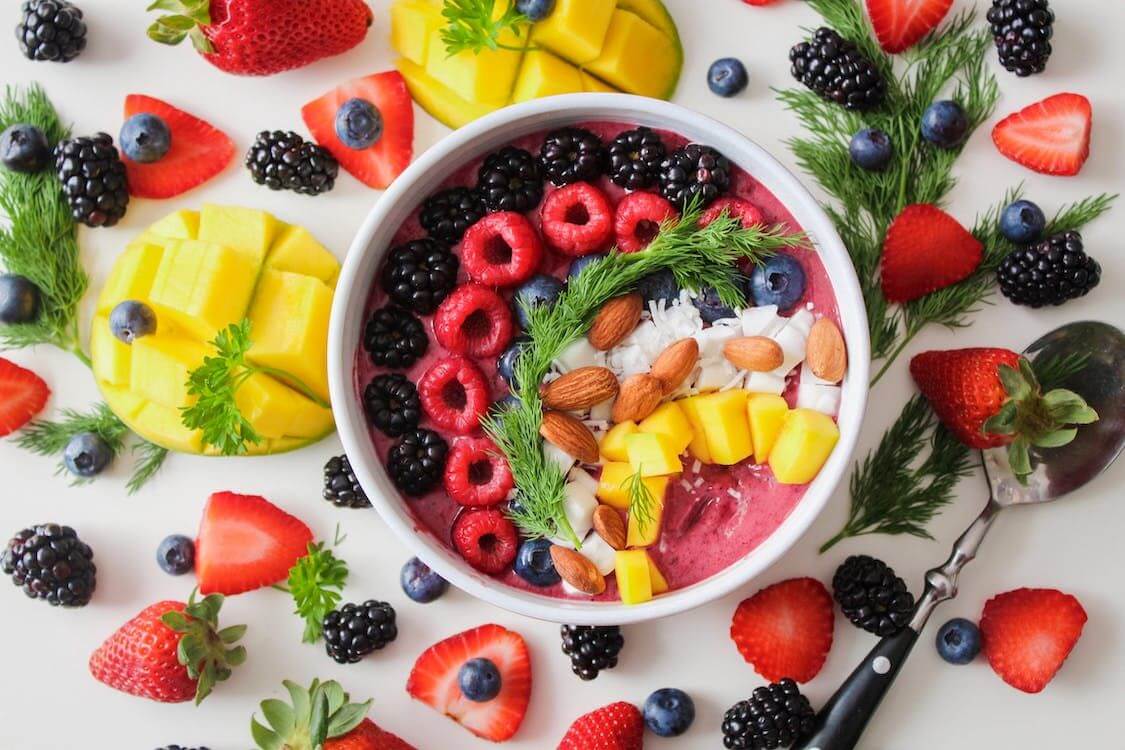
Contrary to popular belief, strawberries aren’t berries in the botanical sense. They belong to a category known as aggregate fruits. This classification is due to the way strawberries develop: they form from a flower with multiple ovaries. Post-pollination, these ovaries swell and eventually become what you recognize as a strawberry. This process is quite different from how true berries, like grapes, develop.
Strawberries, along with blackberries and raspberries, are complex fruits. They grow from flowers with several ovaries, making them aggregate fruits. In contrast, true berries, scientifically known as simple fruits, develop from flowers with a single ovary. Grapes are a classic example of this type, where each grape is a result of one ovary within a flower.
It might surprise you to learn that several fruits commonly not considered berries are, in fact, true berries. Bananas, tomatoes, and watermelons are all botanical berries. They grow from flowers with a single ovary and have their seeds embedded within the flesh, meeting the criteria for true berries.
The garden strawberry that you enjoy today was first bred in France around 1840. It was a result of crossing two wild strawberry species: Fragaria virginiana from North America, known for its flavor, and Fragaria chiloensis from Chile, noted for its large size. This cross-breeding led to the delicious and sizeable strawberries we are familiar with today.
Unraveling the Berry Confusion
Despite its large size and hard rind, a watermelon is, in fact, a berry according to botanical classification. This might come as a surprise, given its physical characteristics vastly differ from what you typically associate with berries. The watermelon is a type of berry known as a pepo, characterized by a thick rind and no internal divisions. This topic will delve into the botanical criteria that classify watermelons as berries, offering you a clearer understanding of this often-misunderstood categorization.
Why Cherries Aren’t Considered Berries
Cherries, commonly perceived as berry-like, are not berries in the botanical sense. The key lies in their structure – cherries are classified as stone fruits due to their inedible pits. Unlike true berries, which have seeds embedded in the flesh of the fruit, cherries possess a single, hard stone-like seed at their core. This discussion will provide insights into the specific characteristics that define berries and stone fruits, enhancing your knowledge of fruit classification.
Apples: A Different Fruit Category Altogether
Apples, a staple in many diets, are not classified as berries but as pome fruits. This categorization is due to their unique structure, where a tough tissue, the core, clearly separates the seeds from the outer softer part, known as the pericarp. Understanding the anatomical differences that set pome fruits apart from berries can give you a broader perspective on the diverse world of fruit taxonomy and the intricate details that determine how fruits are classified.
The Influence of Botanical Classification on Dietary Choices
The impact of botanical classifications on dietary choices is a topic of contention among nutritionists and botanists. On one side, nutrition experts argue that focusing on the botanical specifics of fruits like strawberries may lead to confusion in dietary recommendations.
They advocate for a more simplified approach that groups fruits based on their nutritional benefits rather than their scientific classifications. This helps in giving clear dietary advice to the public. On the other hand, botanists and some nutritionists argue for the importance of accurate botanical knowledge in understanding the nutritional profiles of different fruits. They believe that a deeper understanding of a fruit’s classification can provide insights into its nutritional content and health benefits.
The Role of Botanical Terminology in Marketing
In marketing, the balance between botanical accuracy and consumer understanding is a delicate one. Some marketers argue that sticking to botanical accuracy can sometimes mislead or confuse consumers.
For example, labeling a watermelon as a berry might technically be correct, but it does not align with common consumer perceptions and could potentially mislead customers. Conversely, advocates for scientific accuracy in marketing insist that aligning product labeling and advertising with botanical facts is essential for educational purposes and fosters a more informed consumer base.
Genetic Modification and Its Impact on Fruit Classification
The advent of genetically modified (GM) foods has sparked a debate on traditional fruit classifications. Proponents of GM technology argue that genetic modification is simply an advanced form of breeding and does not fundamentally change the fruit’s classification. They emphasize the benefits of GM, such as improved nutritional value or resistance to pests. Opponents, however, contend that significant genetic changes might warrant a reevaluation of how these fruits are classified. They argue that altering key characteristics could place the fruit into a different category, both botanically and nutritionally.
The Educational Aspect of Fruit Classification
In educational settings, the debate centers around how much botanical detail should be included in the curriculum. Some educators advocate for simplifying the classification system for easier understanding by students, prioritizing practical knowledge over scientific specifics. They argue that too much emphasis on botanical accuracy can overwhelm students and detract from more practical learning. However, others argue for a comprehensive botanical education, believing that a detailed understanding of plant biology is crucial for students’ overall scientific literacy and can foster a deeper appreciation for nature.
Culinary Practices and Fruit Classifications
Within the culinary world, the relevance of botanical classifications is often questioned. Chefs and culinary experts typically categorize fruits based on taste, texture, and usage in cooking, which can differ significantly from their botanical classifications. Some culinary professionals argue that for cooking purposes, practical classifications based on culinary attributes are more useful than strict botanical definitions. However, others in the culinary field argue that understanding the botanical classifications can enhance a chef’s knowledge and appreciation of ingredients, leading to more informed and creative use in the kitchen.
The Health Benefits Of Strawberries
- Strawberries are packed with antioxidants, including vitamin C, quercetin, and anthocyanins. These compounds help protect your cells from oxidative damage caused by free radicals, which can lead to chronic diseases like cancer and heart disease.
- Consuming strawberries regularly can have a positive impact on heart health. The high levels of anthocyanins in strawberries have been linked to a reduced risk of heart attacks. Additionally, strawberries contain fiber, potassium, and folate, all of which contribute to a healthy heart by regulating blood pressure and reducing cholesterol levels.
- Vitamin C, present in abundance in strawberries, is essential for collagen production, which keeps your skin firm and youthful. The antioxidants in strawberries also help combat skin aging caused by UV radiation and pollution. Including strawberries in your diet can contribute to glowing, healthy skin.
- Strawberries are relatively low in calories but high in fiber, making them a satisfying snack choice for those trying to manage their weight. The fiber helps you feel full and reduces overeating, while the natural sweetness of strawberries can satisfy your sweet tooth without resorting to high-calorie desserts.
- The fiber content in strawberries not only aids in weight management but also supports digestive health. It helps prevent constipation and promotes regular bowel movements. Additionally, strawberries contain antioxidants and anti-inflammatory compounds that can soothe the digestive tract.
- Strawberries have a low glycemic index, which means they have a minimal impact on blood sugar levels when consumed in moderation. This makes them a suitable choice for individuals with diabetes or those looking to prevent blood sugar spikes.
- The high vitamin C content in strawberries is well-known for its immune-boosting properties. Regular consumption of strawberries can help your body fend off infections and illnesses by enhancing the production of white blood cells and antibodies.
- Strawberries contain antioxidants like vitamin C and quercetin, which are beneficial for eye health. They help protect your eyes from oxidative stress and age-related conditions like cataracts and macular degeneration.
- Chronic inflammation is a common factor in many diseases. Strawberries’ anti-inflammatory properties can help reduce inflammation in the body, potentially lowering the risk of chronic illnesses associated with inflammation, such as arthritis and certain types of cancer.
- Emerging research suggests that the antioxidants in strawberries may support brain health and cognitive function. Regular consumption may help improve memory and reduce cognitive decline as you age.
Disclaimer
While strawberries offer numerous health benefits, it’s essential to remember that a balanced diet that includes a variety of fruits and vegetables is key to overall health. Additionally, individual responses to food can vary, so it’s advisable to consult with a healthcare professional or nutritionist for personalized dietary guidance.
Nowadays, strawberry plants are rarely grown from seeds. Instead, they are propagated through runners, which are extensions that grow out from an existing plant. This method of cultivation ensures consistency in the quality and characteristics of the strawberries produced.
In the grand debate of berries, drupes, and aggregates, one thing remains crystal clear: strawberries are a delicious gift from nature. Whether they fit the botanical criteria of a “true berry” is a mystery for the ages. But hey, does it matter when you’re savoring the sweet, juicy goodness of these red gems? Berry or not, strawberries will forever hold a special place in our hearts and palates.
